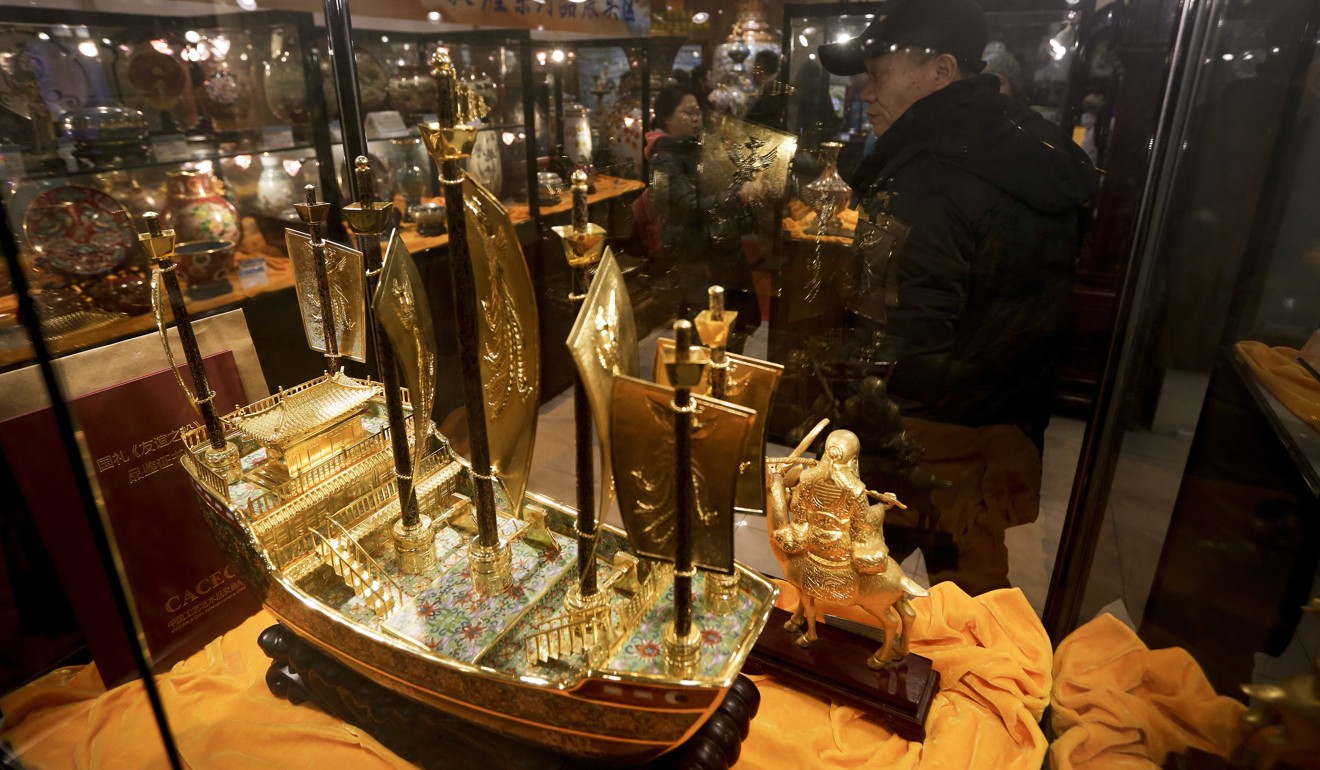
China’s Lunar New Year spending growth slows to decade low despite record US$148.96 billion sales
- National retail and catering revenue rose just 8.5 per cent compared to 10.2 per cent last year, the Ministry of Commerce said
- Growth rate for tourism revenue also down from 12.1 per cent in 2018 to 8.2 per cent this year, a total spend of 513.9 billion yuan during the 2019 holiday period
Sales growth in China during the seven-day Lunar New Year Holiday slowed to the lowest rate in a decade this month, questioning if the government can unleash the country’s domestic growth potential to counter the slowdown in the economy.
National retail and catering revenue rose 8.5 per cent during the holiday to 1.005 trillion yuan (US$148.96 billion), the Ministry of Commerce said on Sunday.
But even though the overall sales figure reached a record high, the growth rate fell from the 10.2 per cent witnessed last year to the lowest rate since the government began publishing holiday sales data a decade ago.
Ding Shuang, Greater China chief economist for Standard Chartered Bank, said that holiday spending “may no longer grow by double-digits.”
“Actually, [sales] would have been worse without the recently released consumption incentives,” he added.
The growth rate for tourism revenue was also down from 12.1 per cent in 2018 to 8.2 per cent this year, with the Ministry of Culture and Tourism confirming 513.9 billion yuan was spent during the 2019 holiday period.

The government recently rolled out a series of incentives to boost purchases of higher priced consumer goods, including home appliances, to spur overall spending to stabilise the economy.
“Weak consumption during the Chinese New Year holidays in 2019 does not bode well for overall retail sales growth and supports our full-year forecast for retail sales growth to slow to 8.5 per cent in 2019 from 9.0 per cent in 2018,” Nomura China economist Lu Ting said.
“Household consumption is likely to be sluggish, given the quick build-up of household debt, the lacklustre income growth outlook amid the economic slowdown and the cooling property sector,” he added, forecasting more government reliance on infrastructure investment to stabilise economic growth in 2019.
The Lunar New Year sales data does not adequately reflect the rising share of service consumption, but is still an important indicator of consumer confidence, which is vital for Beijing to stabilise the national economy.
National gross domestic product (GDP) expanded by 6.6 per cent last year, the slowest growth pace since 1990, and it is widely projected to slow further to a range of 6.0-6.5 per cent this year.
The growth rate could be even lower if there is an escalation in trade tensions with the United States, which is China’s top export destination.
A delegation led by US trade representative Robert Lighthizer and US Treasury Secretary Steven Mnuchin will visit Beijing on Thursday and Friday this week to continue negotiations to reach a trade deal before the March 1 deadline.
The outlook for a deal remains unclear, with the US threatening to increase the tariff on US$200 billion of Chinese imports from 10 per cent to 25 per cent unless there is an agreement by the deadline.
Consumption contributed 76.2 per cent of the GDP growth last year, an increase of 18.6 percentage points from a year earlier and much higher than the 43.8 per cent contribution by investment.

At the annual Central Economic Work Conference in December, which set the economic policy agenda for this year, Chinese President Xi Jinping stressed that the government would focus on building a powerful domestic market as a countermeasure to external pressures from the trade war with the United States.
Ding, from Standard Chartered Bank, said the Chinese government will observe the impact of the personal tax cut that took effect on January 1 before implementing more consumption incentives.
Capacity bottlenecks and quality shortfalls also remain in the domestic supply of consumer goods, which have pushed many Chinese consumers to buy foreign brands, increasing spending overseas.
The State Immigration Administration recorded over 6.3 million Chinese citizens left the country during the week-long holiday, flocking in particular to Thailand, Japan, South Korea, Singapore, the United States and Hong Kong.
Chinese citizens visiting foreign countries increased 12.5 per cent from the same period last year, China's state-owned Xinhua News Agency reported.

